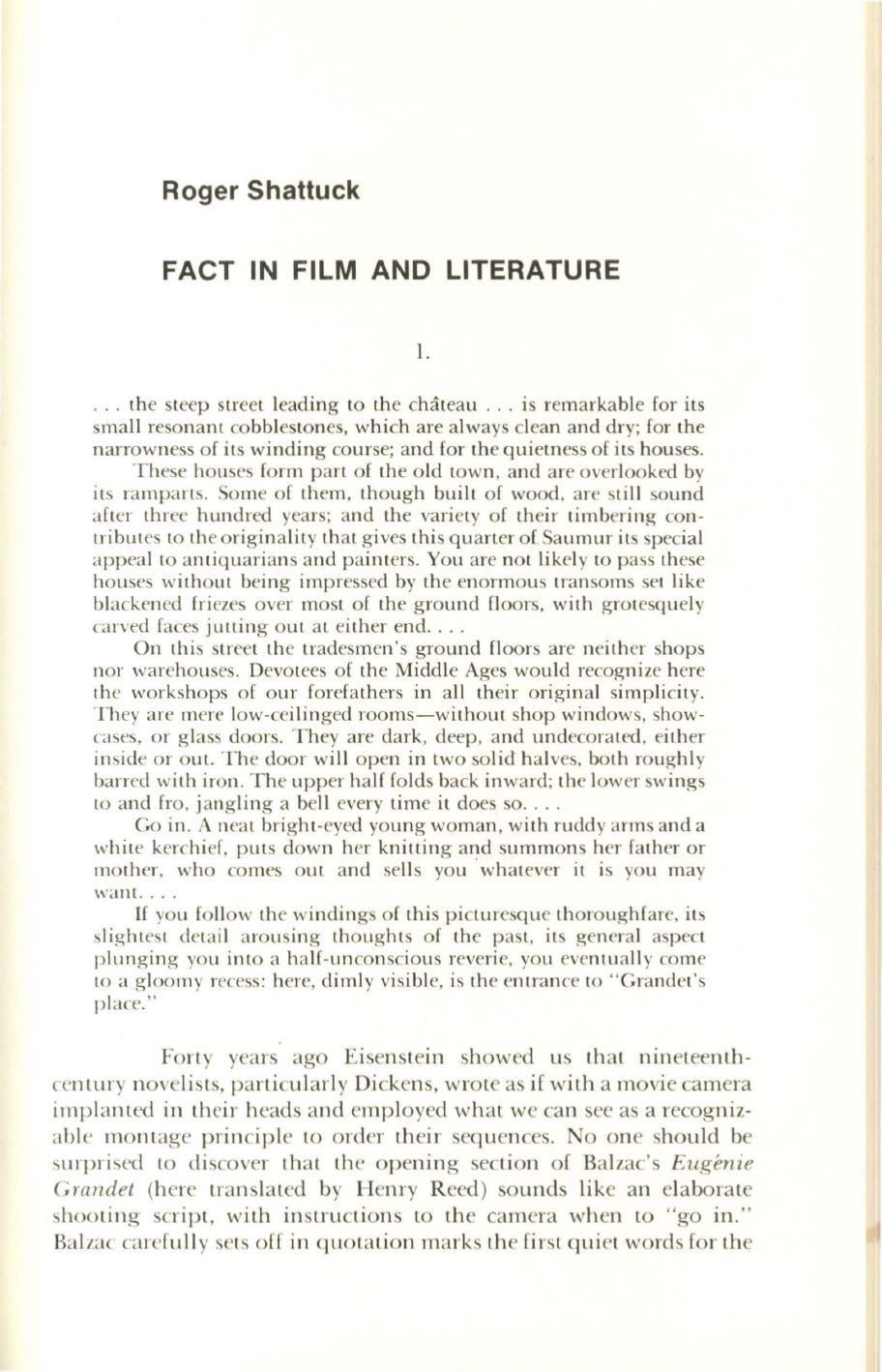
Roger Shattuck
FACT IN FILM AND LITERATURE
I.
the steep street leading to the chateau .. . is remarkabl e for its
small resonant cobblestones, which are always clean and dry; for the
narrowness of its winding course; and for the qui etness of its houses.
T hese houses form part of the o ld town , and are overlooked by
its ramparts. Some o f them, though built of wood , are still sound
a fter three hundred years; and the variety of their timbering con–
tribut es
to
th e ori g inality that g ives thi s qu arter of Saumur its special
appea l
to
antiqu ari an s and painters. You are not likely to pass these
houses without being impressed by th e enormou s tran soms sel like
bl ackened fri ezes over most of the ground fl oors, with grotesquely
carved faces jutting o ut at either end. . . .
On thi s street th e tradesmen 's ground fl oors are neither shops
nor wareho uses. Devotees of the Middl e Ages would recognize here
th e work shops of our forefath ers in all their origin al simplicity.
They are mere low-ceilinged rooms-without shop windows, show–
cases. or g lass doors. They are dark, deep, and undecorated, either
in side o r out. T he door will open in two solid h alves, both roughl y
barred with iron . The up per half fo lds back inward ; the lower sw ings
10
and fro, jangling a bell every time it does so....
Go in . A nea t bri ght-eyed young woman , with rudd y arms and a
white kerchi ef, puts down her knitting and summons her fath er or
mo th er, who comes out and sells you 'wh atever it is you may
want. ...
If
you follow the windings of thi s pi cturesqu e thoroughfare, its
sli ghtes l deta il aro using th oughts o f the past, its general aspect
plunging you in to a ha lf-un con scious reveri e, you eventu all y come
to
a gloomy recess : here, diml y visibl e, is the entrance
to
" Grandet's
pl ace."
Forty yea rs ago Eisenstein showed us th at nineteenth–
century no veli sts, particul a rl y Di ckens, wrote as if with a mo vi e camera
impl anted in th eir heads and empl oyed wha t we can see as a recogniz–
abl e montage prin cipl e to order their sequences. No one should be
surpr ised to di scover tha t th e opening secti on of Balzac's
Eugimie
G randet
(here transla ted by Henry Reed ) sounds like an elabora te
shoo tin g script , with in structi ons to th e camera wh en to "go in. "
Ba lzac ca refull y sets
0 ((
in quo ta tion marks the first qui et wo rds for th e


